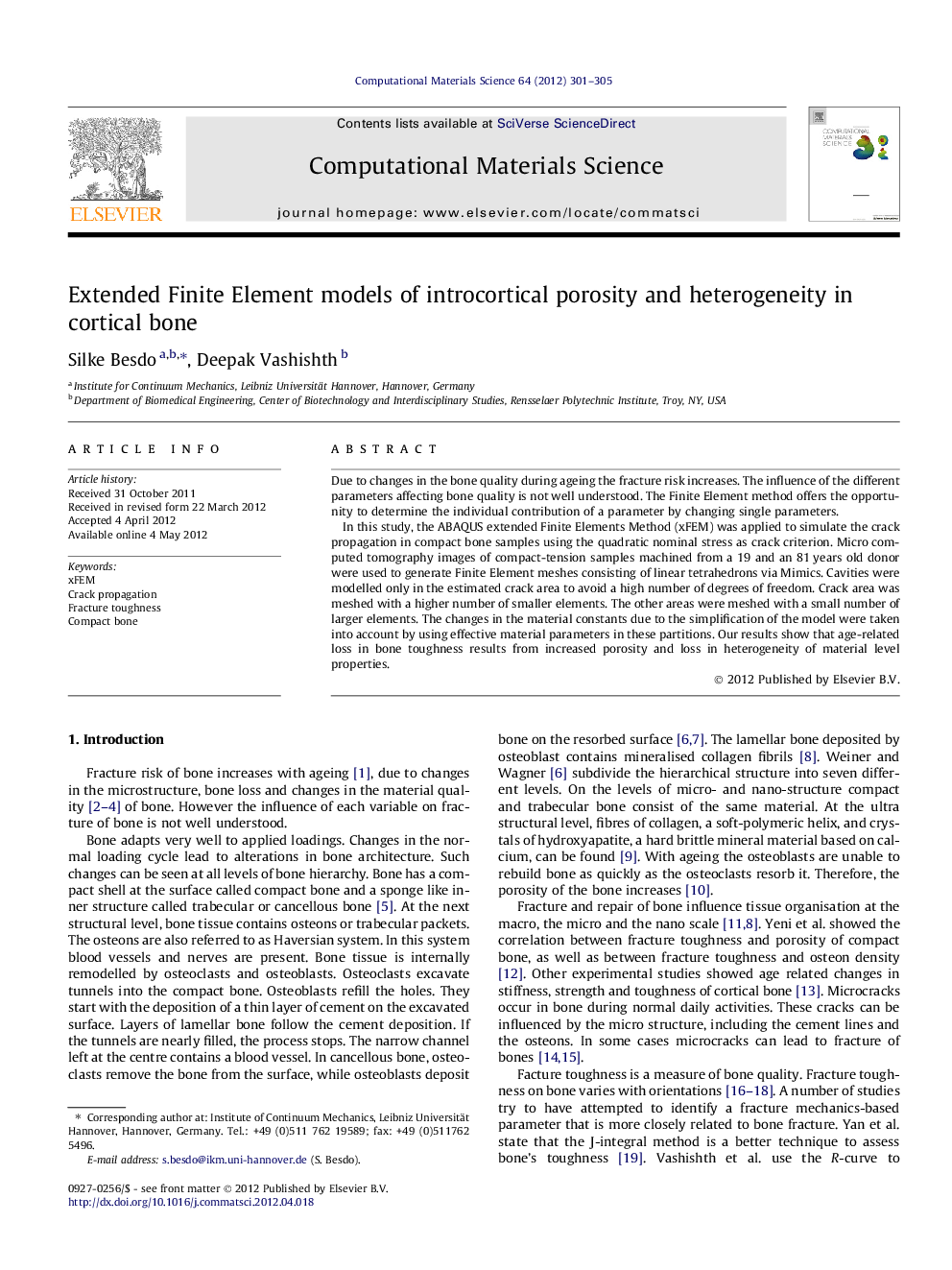| Article ID | Journal | Published Year | Pages | File Type |
|---|---|---|---|---|
| 1561732 | Computational Materials Science | 2012 | 5 Pages |
Due to changes in the bone quality during ageing the fracture risk increases. The influence of the different parameters affecting bone quality is not well understood. The Finite Element method offers the opportunity to determine the individual contribution of a parameter by changing single parameters.In this study, the ABAQUS extended Finite Elements Method (xFEM) was applied to simulate the crack propagation in compact bone samples using the quadratic nominal stress as crack criterion. Micro computed tomography images of compact-tension samples machined from a 19 and an 81 years old donor were used to generate Finite Element meshes consisting of linear tetrahedrons via Mimics. Cavities were modelled only in the estimated crack area to avoid a high number of degrees of freedom. Crack area was meshed with a higher number of smaller elements. The other areas were meshed with a small number of larger elements. The changes in the material constants due to the simplification of the model were taken into account by using effective material parameters in these partitions. Our results show that age-related loss in bone toughness results from increased porosity and loss in heterogeneity of material level properties.
► xFEM simulations to predict fracture toughness of cortical bone from microCT images. ► Studying the influence of porosity on fracture toughness of cortical bone. ► Using of homogenisation techniques to reduce the number of Finite Elements.
